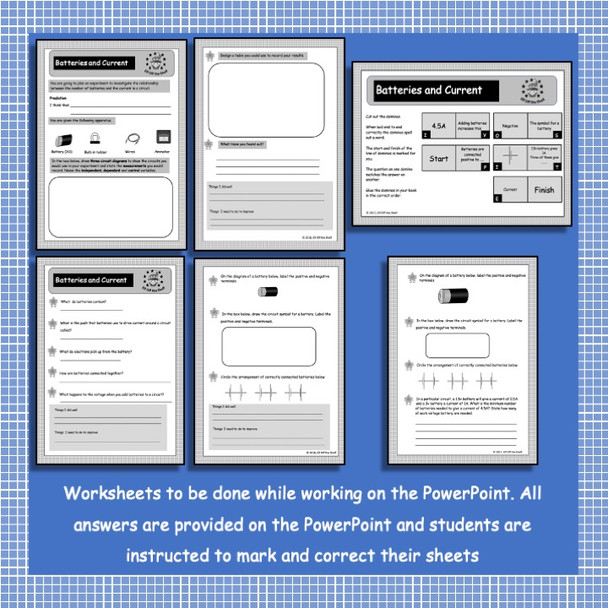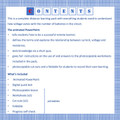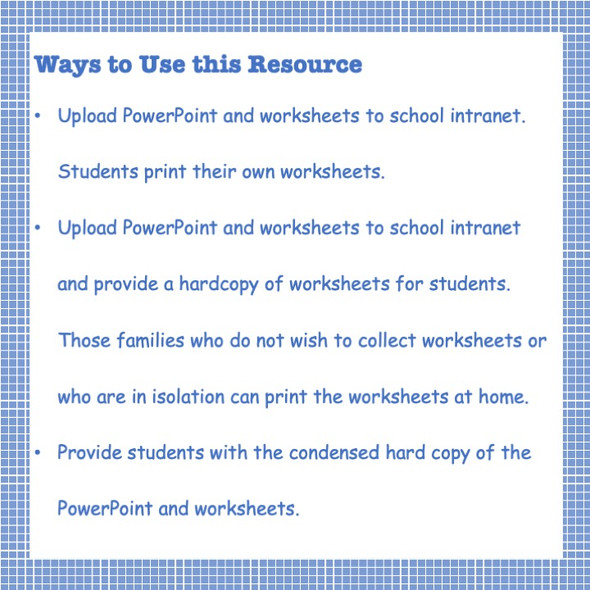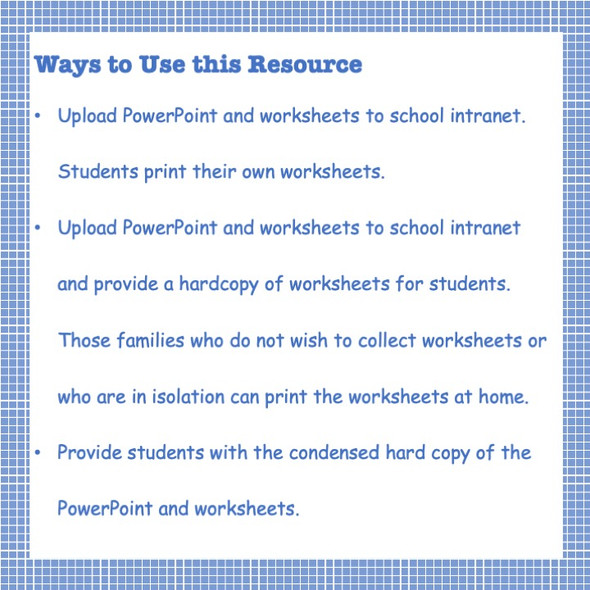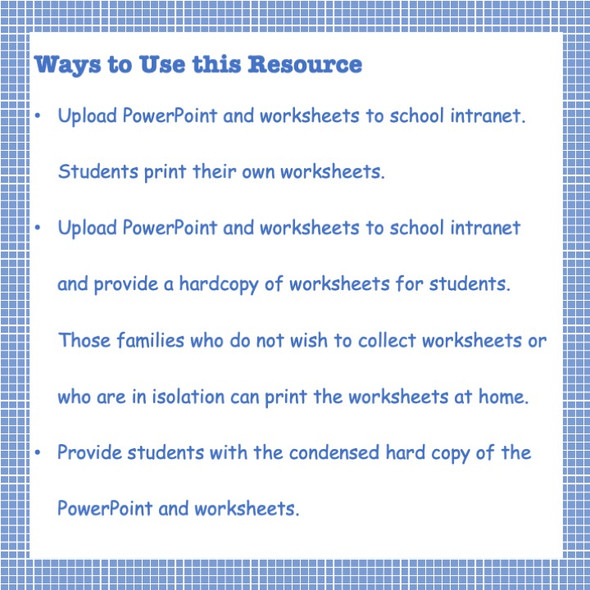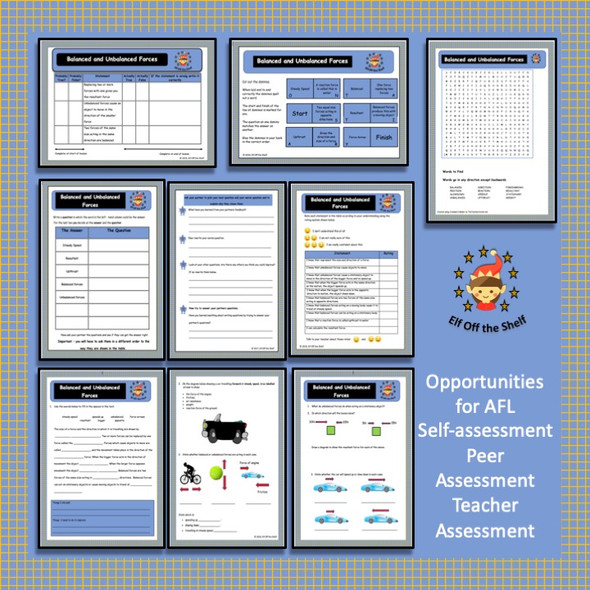Description
This is an action-packed distance learning or homeschool lesson on the relationship between the number of batteries and current.
This resource has been designed so that the animated PowerPoint replaces the teacher by providing structure, sequence, knowledge and answers. The worksheets, cut-outs, foldable and progress check provide a familiar medium for students to develop and test their knowledge, continue to develop their literacy skills and use their creativity to organise their learning and assess their progress.
Objective
- To know that an electric current is a flow of electrons which pick up energy from the battery.
- To know that as batteries are added to a circuit current increases and the lamp gets brighter.
- To be able to make a prediction and design an experiment to investigate the relationship between the number of batteries and current.
- To be able to draw a bar graph.
- To be able to calculate the output of n number of batteries from known numbers of batteries, voltages and currents.
Resources
1. An animated PowerPoint which guides the student through the lesson by:
- explaining how to use distance learning effectively;
- explaining how to use this resource;
- explaining current, voltage and resistance and the relationship between them;
- providing the answers to all the worksheets so that the students can mark and correct their work.
2. Four worksheets, and two cut-out activities, the answers to which are in the PowerPoint.
3. A foldable and cut-out activity so that students can record and organise their learning.
4. A checklist for students to use to assess their progress.
5. For those students without internet or a computer or a computer at home a condensed printable copy of the PowerPoint is provided for distribution by school.
Ways to Use this Resource
- Upload PowerPoint and worksheets to school intranet. Students print their own worksheets.
- Upload PowerPoint and worksheets to school intranet and provide a hardcopy of worksheets for students. Those families who do not wish to collect worksheets or who are in isolation can print the worksheets at home.
- Students without photocopying facilities are instructed to write their answers in full sentences and to writs a sentence to describe any circuit diagrams drawn.








